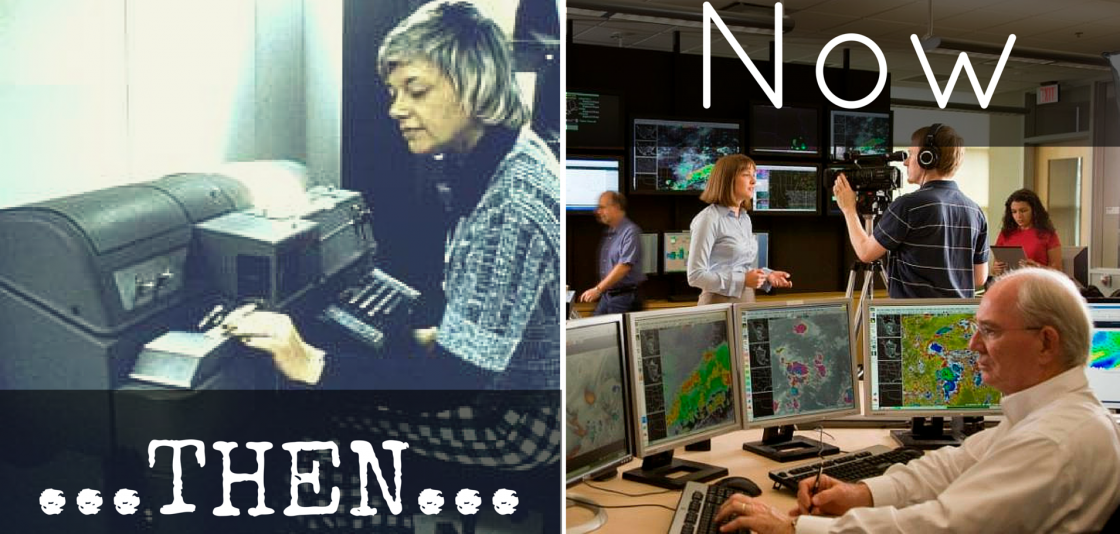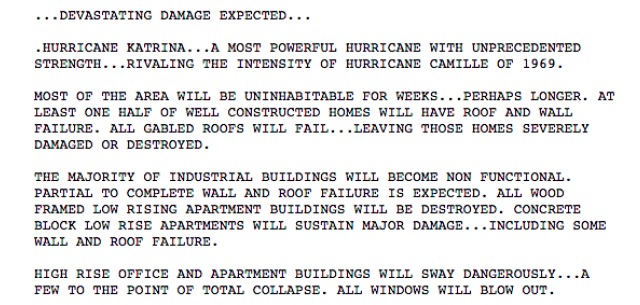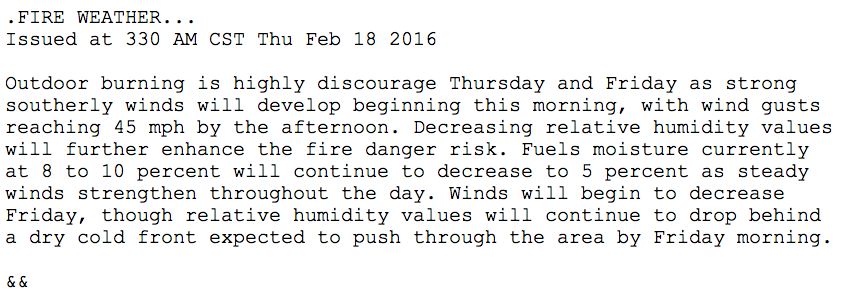FOR DECADES. . .THE US NATIONAL WEATHER SERVICE. . . HAS ISSUED ITS FORECAST DISCUSSIONS IN SHOUTY CAPITAL LETTERS. . .USING FRAGMENTED SENTENCES. . .SEPARATED BY ELLIPSES. Yesterday it was announced that the National Weather Service will switch to mixed-case type and conversational language to provide a more user-friendly experience — and potentially save lives.
The change in language, with the ability to now use a 25-character ASCII set, is part of a larger effort to make the US more resilient in the face of extreme weather events. For the last few years, the NWS has been working with a social scientist to learn how people react to weather news, including asking communities what might help them mobilise in the face of a disaster, according to Tom Evans from the Honolulu Weather Forecast Office of NOAA’s National Weather Service. “Moving from an all-caps product and adding all of the typical symbols is one of the methods we are using to make our products more usable.”

Using teleprinters in the 1960s and the way the weather works today. Image via NOAA
Unless you’re a weather nerd, you might not have noticed the NWS’s typographical equivalent of yelling. Originally formatted to be sent over teletype machines, which only had capital letters, the style has not really changed that much over the decades, even as this technology has become (mostly) obsolete.
Here’s a famous statement issued just before Hurricane Katrina, 10 years ago:

And one issued for Los Angeles yesterday:

Even as the reports were increasingly shared on the internet, the statements only barely adjusted to our high-tech lifestyles. The only real change is the addition of hyperlinks. The all-caps text and staccato delivery remains the same.
On May 11, according to a sample document released by the NWS, forecast discussions will look more like the things we read and share every day:

Refreshing, isn’t it?
Although it’s taken a long time to move away from the all-caps delivery, this isn’t the first time that the NWS has changed its policies to make forecast discussions more accessible. Thanks to the effectiveness of that Hurricane Katrina statement — many people said reading or hearing it was the first time they realised the gravity of the situation — the NWS encouraged meteorologists to use more personal, jargon-free language.
After testing mixed-case messages against the old all-caps versions, NWS concluded that mixed-case will also be more likely to encourage more people to take action. In fact, mixed-case reports have already proven more effective during recent tropical storms in the Pacific, said Evans. “When a weather event occurs, and there are no lives lost and minimal property damage because people responded to our advisories, then we consider the weather statement a success.”
Lovers of caps-lock, do not fret. The NWS will save all-caps for when they really need to emphasise important phrases: TORNADO EMERGENCY. TAKE COVER NOW!
Still, I’m gonna miss quoting those ALL CAPS FORECASTS. . .FILLED WITH INFORMATION. . .FOLLOWED BY ANOTHER THOUGHT. . .
Sometimes they were like poetry, man.
A COLD UPPER LEVEL TROUGH OF LOW PRESSURE AND SURFACE COLD FRONT WILL BRING PERIODS OF RAIN… MOUNTAIN SNOW… POSSIBLE THUNDERSTORMS…
— Alissa Walker (@awalkerinLA) October 31, 2014
[NWS]
Top: AP Photo/Charlie Neibergall
